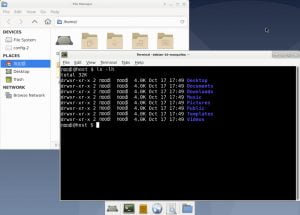

Cinnamon-Desktop Environment: cinnamon &.MATE-Desktop Environment: mate-session &.Gnome-Desktop Environment: gnome-session &.If you choose to use other GUIs, replace startxfce4 & accordingly to #x-terminal-emulator -geometry 80x24+10+10 -ls -title "$VNCDESKTOP Desktop" & Log file is /home/vncuser/.vnc/namhuy:1.logĪfter VNC Server generated files, we have to kill it in order to configure xstartup file. Starting applications specified in /home/vncuser/.vnc/xstartup

New 'namhuy:1 (vncuser)' desktop is namhuy:1Ĭreating default startup script /home/vncuser/.vnc/xstartup Xauth: file /home/vncuser/.Xauthority does not exist You will require a password to access your desktops. $ vncserverĪfter you started VNC Server, you will be asked to create VNC’s password (VNC password can be different or the same password as your user’s password) vncserver With regular or privileged user, start vncserver for vncserver to creates it’s necessary files.

We now switch to vncuser to create some VNC configuration’s files. You can use any privileged user or root user to login to your VNC Server, but for security reason, I’m going to create vncuser for my VNC Server ( you can change vncuser in tutorial to any user that you would like to use, it can be your existing user) # adduser vncuser Very similar to Ubuntu (since Ubuntu is based on Debian), you only need to use vnc4server package to install VNC Server # apt-get install tightvncserver Configure VNC Server to work on Ubuntu 14.04 / Debian 8


 0 kommentar(er)
0 kommentar(er)
